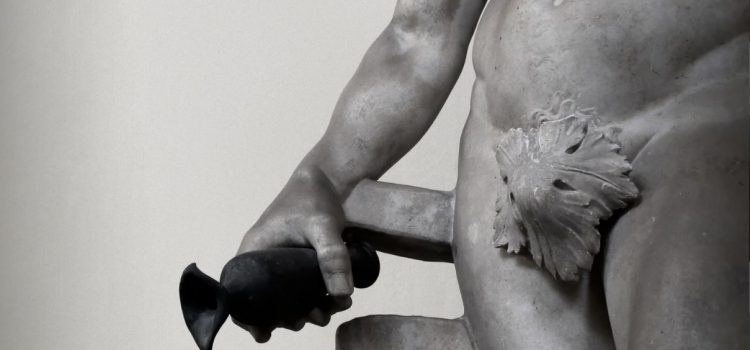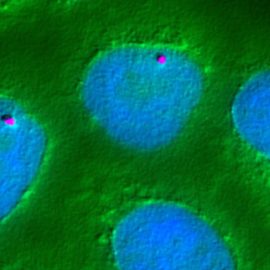

This article is an excerpt from the Shortform book guide to "Sex at Dawn" by Christopher Ryan and Cacilda Jethá. Shortform has the world's best summaries and analyses of books you should be reading.
Like this article? Sign up for a free trial here .
What does male genital anatomy tell us about human sexuality? Is it proof that humans are wired to be polygamous?
In their book Sex at Dawn, authors Ryan and Jethá discuss the male genital anatomy in relation to human mating behaviors. They back up their discussion with an examination of female copulatory vocalization.
Here are Ryan and Jethá’s arguments.
Modern Human Biology and Polygamy
In their book, Ryan and Jethá use several aspects of modern human biology as evidence for their argument that prehistoric humans lived in promiscuous societies. These include the size and shape of the male genital anatomy and female copulatory vocalization. Let’s explore each in more detail.
Testicle Size
According to the authors, in highly sexually competitive species (such as gorillas), males tend to have smaller testicles—since only the dominant male has sexual access to a given female, his sperm is guaranteed to be the one that reaches her egg, so his body needn’t worry about producing large amounts of it. However, in more promiscuous species where each female might have many mates, males have evolved over time to have larger testicles, resulting in more sperm production and a higher chance of being the one to impregnate a given female and pass on their genes. According to the authors, this “sperm competition” replaces social competition among males; if males don’t need to compete for sexual access to a given female (because she’s mating with all of them), producing higher concentrations of sperm increases an individual male’s chances of being the one to impregnate that female.
(Shortform note: In Sex at Dusk, Lynn Saxon argues that the emphasis on sperm competition is part of Ryan and Jethá’s agenda to remove active choice from the narrative of female mate selection. In Saxon’s view, the authors of Sex at Dawn believe that women’s mate selection process is entirely unconscious (because when she gives sexual access to multiple partners, she can’t choose whose sperm ultimately fertilizes her egg) and should remain that way. In other words, Saxon believes Ryan and Jethá are arguing that women never did—nor should they now—consciously choose which men to mate with.)
Human testicles, on average, are larger than those of polygynous (one male mating with multiple females) gorillas and smaller than those of promiscuous chimpanzees and bonobos. The authors believe this means that, until about 10,000 years ago, humans were a notably promiscuous species. However, with the advent of agriculture came monogamy and one-to-one sexual matches, which meant that even males with smaller testicles (who produced less sperm) had a chance of impregnating someone. Thus, the genes for reduced fertility were passed on and allowed to spread in the general population. The authors argue that this led to an overall reduced testicle size in the last 10,000 years. Therefore, they conclude that, until 10,000 years ago, humans lived in a non-competitive, multimale-multifemale mating system.
(Shortform note: Ryan and Jethá’s argument is not universally accepted among evolutionary anthropologists. One reviewer, William Buckner, pointed out that human testicles (which weigh in at 34 grams on average) are much closer in size to gorillas’ (23 grams) than to chimps’ (149 grams) or bonobos’ (168 grams). Buckner argues that it’s unlikely that human testicles reduced from a size comparable to chimpanzees’ and bonobos’ to their current size in just 10,000 years—therefore, it’s more likely that humans evolved in polygynous groups, similar to gorillas.)
Penis Shape and Size
According to the authors, the human penis is much larger than that of any great ape. It’s also uniquely shaped: Whereas animal penises typically have a tapered or curled end, the human penis has a flared glans. Ryan and Jethá believe this unique anatomy is the evolutionary result of thousands of years of humans living in promiscuous mating systems. Their argument is that this shape, combined with the thrusting motion of sex, is designed to create suction inside the vagina, which pulls the sperm of other males away from the female’s cervix. This suction only happens before ejaculation (at which point the penis changes shape), ensuring that a man’s own sperm isn’t similarly suctioned out. The authors claim this evolutionary adaptation only makes sense if humans evolved in a mating system where sperm competition was important—such as a multimale-multifemale mating system.
(Shortform note: Other anthropologists have questioned Ryan and Jethá’s interpretation of the evidence. They argue not only that the shape of the human penis isn’t particularly unique in the animal kingdom, but also that its shape most closely resembles those of polygynous primates rather than primates who live in multimale-multifemale mating systems.)
Female Copulatory Vocalization (FCV)
Women tend to make more noise during sex than men—a phenomenon that scientists call “female copulatory vocalization,” or FCV. According to the authors, FCV is common in many species. Primatologists have observed that the more promiscuous a species is, the more likely women are to vocalize during sex.
What does FCV have to do with promiscuity? The authors believe that these vocalizations are designed to attract more men, thereby increasing sperm competition and ensuring they pass on the best possible genes to their offspring. Thus, they argue, the presence of FCV in humans is more evidence that humans evolved as a highly promiscuous species.
(Shortform note: A 2011 study found that, in humans, FCV might not be a completely unconscious response to orgasm. While heterosexual women are most likely to orgasm during foreplay, they were most likely to vocalize intensely during vaginal penetration. This intensity reached a peak at the point of male orgasm. Thus, researchers concluded that FCV might have evolved as a partly conscious strategy to advertise the male orgasm to surrounding males. This might help to attract more male mates and therefore increase sperm competition, ensuring that only the male with the strongest sperm (and thus, presumably, the best genes) actually succeeds in getting the female pregnant.)

———End of Preview———
Like what you just read? Read the rest of the world's best book summary and analysis of Christopher Ryan and Cacilda Jethá's "Sex at Dawn" at Shortform .
Here's what you'll find in our full Sex at Dawn summary :
- Why everything we think we know about prehistoric human sexuality is wrong
- Why so many marriages end in divorce
- How humans are designed to be polygamous






